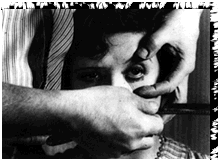So you want to be a Visual Artist, The Real Truth About a Life in the Arts After Graduation!

As you spend your summer dreaming that you will be the next Picasso or who ever your favorite artists is, if you even have one. Here are some truths about Art Schools and a life in the Arts you need to know before you begin your education, your career.
First not all Artists are created equal. Artists come in all shapes and sizes and create in every conceivable medium. There are painters, sculptors, printmakers, ceramists, glass blowers, graphic designers, computers animators, photographers, filmmakers, those who work in multiple mediums, and those who invent new mediums. The list is endless and changes continuously with the advent of technology and interest related to the societies and time we live in and our personal experience. Just get on the internet and look around at what artists are doing all over the world. A life in the arts can be a great adventure depending on your perspective toward art and your point of view.
Many of you have been told that you have real talent for drawing, because you draw all the time and that you should study art.
Maybe you even paint or sculpt, take photographs or made a movie in high school. Maybe you are good on the computer and you have made some animations with Photoshop. Regardless of what talent you have or what idea you have about art or what art is or isn’t, you are headed to art school.
Most Art Schools are not I repeat Are Not going to prepare you to make a sustainable living as a visual artist after graduation. You are going to have to sell a lot of what ever Art you make to earn a living.
You will hear a lot about the MFA programs you need to get into after you have your BFA. In fact, you may spend your junior and senior year in a four-year college building your portfolio so you can apply for a MFA program. Why? So you can teach Art to earn a living.
That is why your professors are standing in the classroom or studio teaching you art. They could not or have yet to make a sustainable living from their artwork. That does not mean they do not have talent and skill, it is just a real, fact of life in the art market.
In fact, less than 5% of all visual artists make a living from the art they want to create, their personal art. To earn the salary of an art college professor making $40,000 a year you will have to sell about $100,000 worth of art every year. Whatever you hope to earn after graduation add 60% and that is your target goal for yearly sales. Even the best of the best art schools are bullshit when it comes to post graduate earnings and job placement for the visual artist who has pursued a traditional career in the arts.
Don’t let the “that’s not really art” line of bullshit derail you from pursuing new technical innovation either. Today art is far more than drawing, painting, sculpting, ceramics, textiles and photography. I listed photography last because photographers hear that photography is still not really art, still today after nearly 200 years after its invention. You will hear the same about electronic art mediums too. Art can be created with anything, any medium your creative mind can conceive from garbage (that’s real trash from the dump) to megabytes and anything else you can lay you hands on.
Check out Chris Jordan’s work “Running the Numbers” http://www.chrisjordan.com/
Now when you and your parents are sitting in the guidance office with an academic adviser and they tell you how great the schools job placement is for the traditional visual artist. Call BULLSHIT.
If you are talking to an adviser at the Art Institutes of America, (they have city names in front of Institute like the Seattle Art Institute) or whatever city they are located in call BULLSHIT twice. Schools from Harvard to the Art Institute of (you fill in the blank) are there to sell you an education. They will sell you on what you believe you want to buy and for as much money as they can get out of you or your parents.
The question you have to ask right now, is what you are buying worth the price. Again, another Fact of Life you need to learn right now before you rake up a big bill or worse yet a big debt that isn’t worth what it cost you.
I guess if your parents are willing to pay the bill for you to pursue your dreams then go for it. You won’t have the burden of excessive debt to subjugate you to a life of poverty.
If you have to barrow money (student loans) to go to school you really, need to think about what you are buying.
You cannot discharge student loans in bankruptcy. In fact Federal Subsidized students loans can dog you until the end of your life if you default. The government can and will seize your income tax returns, your property, your pay check and they can prevent you from obtaining federal employment and prevent you from getting any type of home mortgage that has anything to do with government lending or guarantee programs.

Defaulting on any Government loan can create a life of financial and economic nightmares that just won’t go away until you pay the money back.
So you better be prepared to earn a living that will allow you to pay the money you barrow back. That is another reason your professor is teaching. He or she spent $100,000 plus to get an MFA and off to work they go because I owe I owe as the seven dwarfs sang as they went to work in pursuit of their dreams.
Art is still burning in your blood like a fever that just won’t let go.
This creative fever is the torment that all true artists endure. I can tell you that if Art and a creative life are truly in your blood then there is nothing you can do except give in and pursue a Life in the Arts. It will never let you rest regardless of what you do for a living.
In fact many Artists were side tracked into other professions like medicine, law, business and many others where they made enough money to retire and then pursued their art because of the fever that runs in the blood of a true creative.
How do you know if you are a true creative, well you will just know, the creative fever won’t let you alone. The desire will always be there, you are just a creative junkie.
Your creativity can be satisfied though in many different ways and that is what we are going to talk about now, Survival for Creative’s.
Regardless of what you chose Doctor, Painter or Art Program Director creativity is really a mental thing. Creativity is about ideas and taking those ideas and turning them into some form of reality. Combined with the mental or intellectual side of creativity is the physical part of what you enjoy doing. As Artists, we tend to work in mediums that we enjoy, like paint, pencils, clay the computer, whatever. We tend to focus on details of the medium that stimulate us. For some of us it is working in realism for others it is abstractions. Still focusing further, some of us love color, form, sunsets or intellectual problem solving.
What you have to do is figure out as an artist what elements of art you like then find a commercial application that fits your likes with as few dislikes as possible. This is your fall back job if you do not make it into the 5% margin of artists who are lucky enough to earn a living from their work.
Your fall back position could be the MFA and teaching, but MFA’s are a dime a dozen today and teaching may not be your second calling.
You need to research right now jobs in the creative fields that are in demand. Then make sure you get training in the one with the most employable opportunities you will enjoy doing for a long time or at least a job with the least objectionable insults to your artistic being, a job that will allow you to earn a living and pursue your dreams as an Artist.

Here are some tips on what your school needs to provide to you as a Creative as an Artist.
First, let me explain what I mean when I call you a Creative. I believe that we were born as Creative’s. We are a splinter group of the population as a whole and we just have creative DNA or spirit. When we take aptitude tests, we score dominantly on the creative side of the scale. We are also sometimes called intuitive thinkers but we can also be analytical by nature too. I think there are the “Creative’s” and then there is the rest of the population. Creative’s exist in all vocations and in all occupations. The largest numbers of Creative’s are drawn into the Arts because as a vocation the Arts satisfy our basic needs as creative beings. Painters, Writers, Actors, Musicians, and Film Makers to name just a few of the many vocations we dominate.
No School and No Teacher can teach you how to make Your Art. What they can teach you is a set of skills that will enable you to make your art. Your art is yours, you have to find your art yourself. A good teacher is a mentor that will help you find your way, will help you find your voice and teach you the skills you need to make your voice heard.
As a creative you need to learn as many skills as you can so you can turn your ideas into some form of reality for the non-creative’s.
Your school needs to offer a curriculum that helps you build a diversified set of skills, skills that will enable you to make art and a living. One of the worst inventions of the academic system today is the core curriculum. Although this system might offer you a wide range of skills in traditional art, it may not offer you the skills you need to earn a living. Much of the core curriculum programs are too grounded in traditional skills to allow you the student to broaden the needed skills you will need to make a living.
Aside from learning how to paint, you need to learn some marketable skills like for instance computer graphic design. Don’t like the computer well get over it. You may not want to be a graphic designer but you are going to need solid computer skills to self-market your work until you make it and can afford to hire someone else to market you.
You are also going to need business training including courses in marketing because you as a traditional artist are going to be in business for yourself and you need to know business and the business of art.
You are also going to have to learn how to write so you need to take writing courses. You don’t like to write or were never good at it, well you still need to learn. If you are, still no good at it then get a good editor. You are going to have to be able to talk and write about your work. You may find as you mature as a creative that you really like writing. In fact, maybe you are dyslexic many artists are. You don’t write because it has always been hard and you failed in school, well that is what editors are for. Some of the most creative writers in history had really good editors to correct their English.
If you think, you might like to teach then take teaching courses in addition to the standard MFA course work because to teach in public schools you will need those education courses to be certified to teach.
My point is you have to go to a school that helps you build the skills you need to earn a living while you pursue your art career. If the curriculum is too restrictive to allow you to pursue a subset of secondary skills, find another school. At most, four-year schools you can always combine art with a minor in a related field that is of interest to you.
The more skills you have the better prepared you will be for the real world.
Here are some art vocations that have a high demand, pay well and may keep your creative genius alive and well. However, you are not limited to my list. Do your own research and create your own list of possible secondary vocations.
Arts Management and Development.
http://www.collegeboard.com/csearch/majors_careers/profiles/majors/50.0704.html
If you think you might like to manage an art organization like the NEA then an advanced degree in Arts Management might be for you in addition to your degree in Painting.
If you think you would like to raise money for the arts learn development because people who can successfully raise money are always in demand.
Museum and Gallery Management.
http://www2.lib.udel.edu/subj/muse/internet.htm
http://www.museumsassociation.org/home
If you like great art and want to work in a place that has great art look into museum and gallery management. You could learn to be a curator, exhibit designer, registrar, conservator or museum director.
If you like detail work you could become an art conservator or preservationist.
http://palimpsest.stanford.edu/
http://www2.lib.udel.edu/subj/muse/internet.htm
Today there is a real shortage of Painting Conservators and these jobs pay very well and require well-developed artistic skills. Conservators and preservationist work in all types of areas from architecture to film.
You could become and appraiser if you like studying artists and art as a hobby, combined with your desire to make your own art you can make a good living appraising art.
If you like working on the computer, then learn every professional Adobe program available. Savoy computer designers and Photoshop experts can earn a good living. In addition, learn how to build websites along with the most innovative skills need to be competitive today.
Again, my point is simple. Broaden your knowledge of the jobs in the arts and your skills. The more skills and diversification you have the better able you will be at earning a living. A broad range of skills will also open up new and unlooked for ways to make art, allow your creative voice sing, and be heard.
Some other things to consider

Talk to artists you know about their career. If you don’t know any go out and meet some.
Look for successful artists and not so successful artists where you live. Look in the phone book or on the internet. Call them up and ask if you can talk to them about a career in art or about their career in art. Artists are people and like to talk about their achievements just like you. The more artists you talk to about art and career the more you will learn.
Go to museums and galleries, in fact volunteer at your local museum or art organization for anything. You will find out a whole lot about art organizations.
If that doesn’t work call up the curator and ask for a interview to talk to them about a career in museum management.
Call anybody in any arts position you want to know more about and schedule an interview. This is not an interview for a job. This is an interview for you to find out about a job or vocation. You are the interviewer, ask them what you want to know about what they do for a living and how they got their job. Find out about their background, what lead them to choose this vocation. Have your questions ready when you call. I bet you find some visual artists working in every imaginable place in the arts you look.
Yes, your high school guidance counselor should have told you to do this and so should have your college academic advisor. Just remember they are in the business to sell you an education. You get what you pay for so buyers beware. Also, remember you are the customer and you are going to pay big money for your education so you had better buy the education you need and want.
One other thing you can do as you study art or an arts related field is look for internships. Find out if your school offers assistance with internships as part of the curriculum. Internships will give you hands on experience that you can use on a job resume once you graduate. Take advantage of every opportunity even if your not sure its for you because you will learn something of value and find out what you really like and dislike to do for a living.
Before you barrow all that money be sure you are going to be armed with a diversity of jobs skills when you graduate that will enable you to earn a living and pay back those student loans.
A Life in the Arts is a wonderful thing for Creative’s so use your creative ability to get the life you want. Good Luck.
The statistics that colleges hate to share
http://moneyfeatures.blogs.money.cnn.com/2009/07/12/the-statistics-that-colleges-hate-to-share/
Art Job Resources
http://www.artjob.org/cgi-local/displayPage.pl?page=index.html
http://art.nmu.edu/department/AD_Career-Jobs.html
http://www.nga.gov/education/internvol.shtm
http://www.rfag.org/Education/Apprenticeships/tabid/235/Default.aspx
http://www.communityarts.net/training/archivefiles/apprenticeshipinternship/
slgreatsuccess
July 19, 2009
Marketing your work and yourself as an artist is a whole other aspect of being an artist. This should be included in the curriculum of every MFA program.
There is a good independently published book on this subject. It is called “Wisdom & The Dreame” by
Kristen Thies.
zanele
May 25, 2013
thanks for the advice
Beverly
January 7, 2016
boy…depressing…and worse for me as I have been self employed as an artist since 1987 and worked as a traditional illustrator …fast forward by 2000 I was working full time doing murals & canvas commissions and two years ago it all stopped…now technology has passed me by as an illustrator and murals & canvas commissions….no one is wanted them painted any longer…it all spells big, big, trouble for this old lady!
kennethburrisstudio
March 21, 2017
Nice article David right to a point..
Elena
July 11, 2017
Skype has launched its web-centered buyer beta to the world, following
introducing it largely in the United states and U.K.
earlier this four weeks. Skype for Internet also now works
with Chromebook and Linux for immediate text messaging connection (no video and voice nevertheless,
those call for a connect-in installation).
The increase from the beta provides support for a longer
selection of spoken languages to help you bolster that international functionality